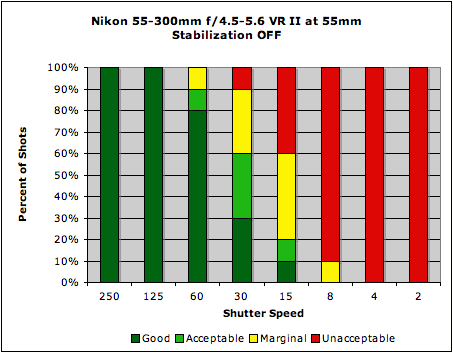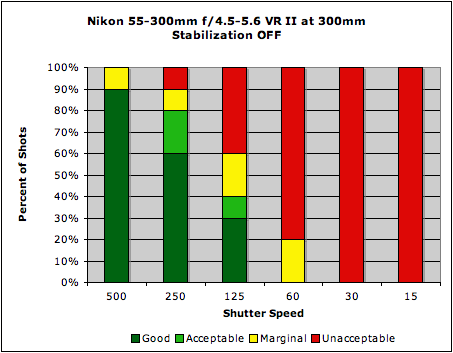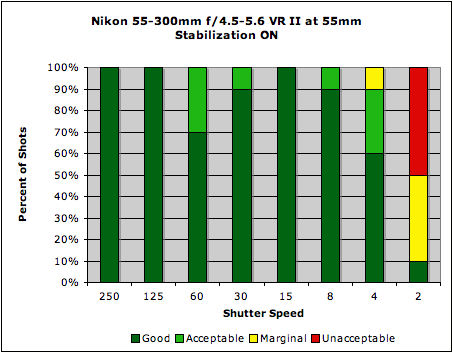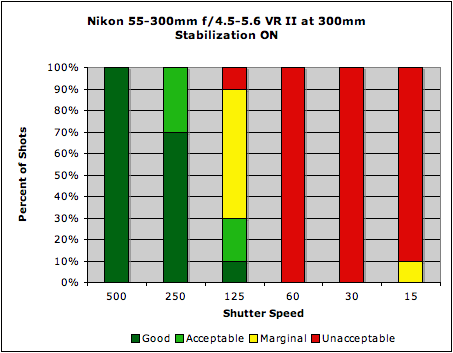Most people tend to think of image stabilization as being mainly for telephoto lenses. While it's true that their longer focal lengths tend to magnify the effects of camera shake, image stabilization can provde a very useful assist at wider angle focal lengths as well; anyone who's ever tried to blur the image of a waterfall, while keeping the surrounding landsape tack-sharp knows exactly what I'm talking about.
At the widest end of its range, Nikon's vibration reduction (VR) system provides four stops of shake reduction, as promised; the most impressive gains were noted at 1/8 of a second, where Rob was getting sharp images at what should have been requiring 1/60 of a second. Even at 1/4 of a second, he was still getting sharp images 50% of the time, and acceptable images a further 40%.
 |
| Mouse over this chart to show results with IS activated. |
At 300mm the VR system wasn't offering the same refined performance - we note perhaps an extra stop of shake reduction. The 300mm focal length ''should'' require a shutter speed of around 1/250s, and indeed the results with VR off showed only 60% of those shots were sharp. With VR on, 70% of those shots are sharp, and the other 30% are acceptable. At 1/125s, there's no huge gain - in fact, less shots are clearly sharp, but more shots are marginally sharp.
 |
| Mouse over this chart to show results with IS activated. |
IS systems tend to provide more benefit to less-stable shooters than very steady ones, so most users will see the same or greater amounts of shake reduction as we measured here. You can read more about our IS test methodology here: SLRgear IS Test Methodology, v2.

